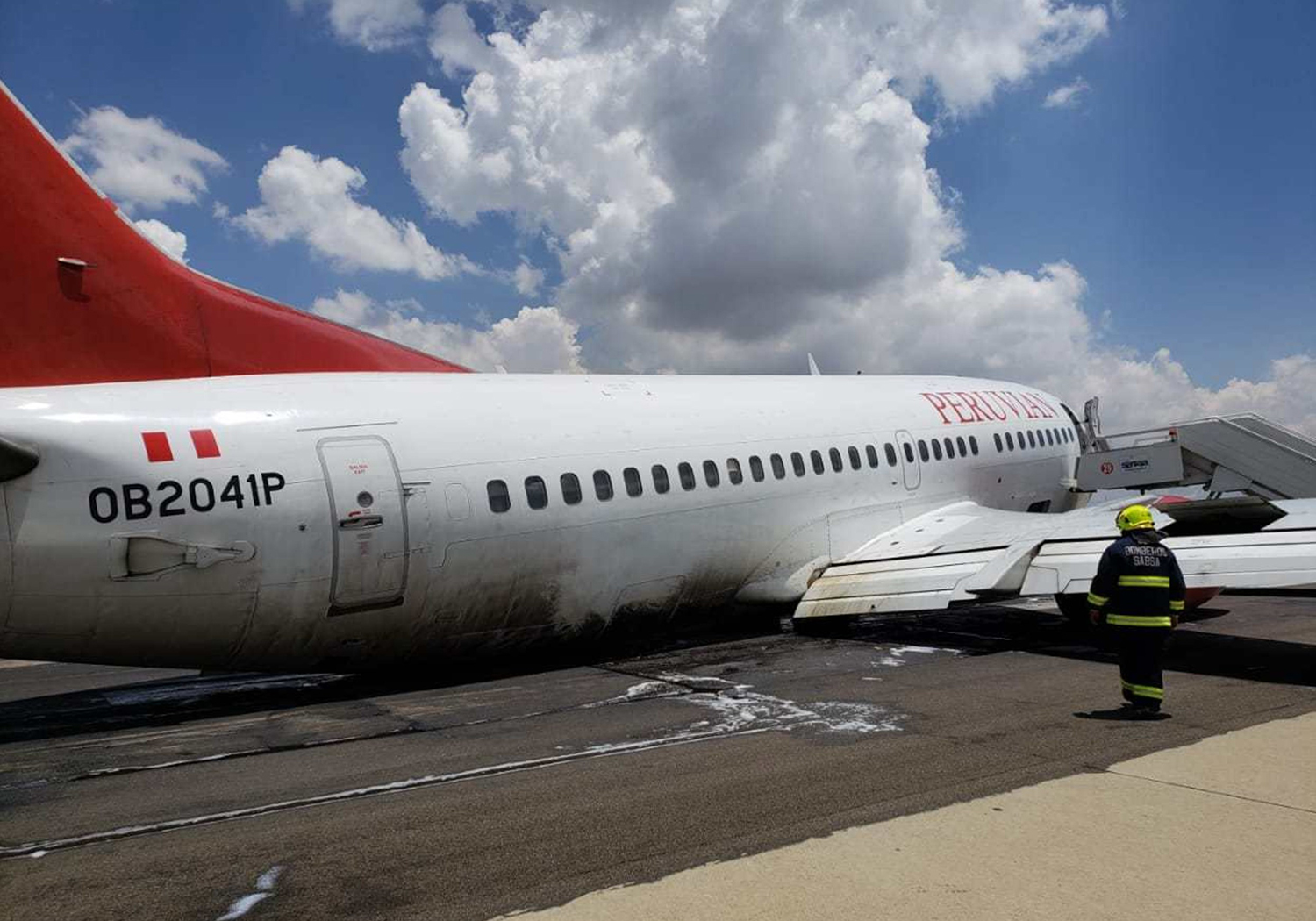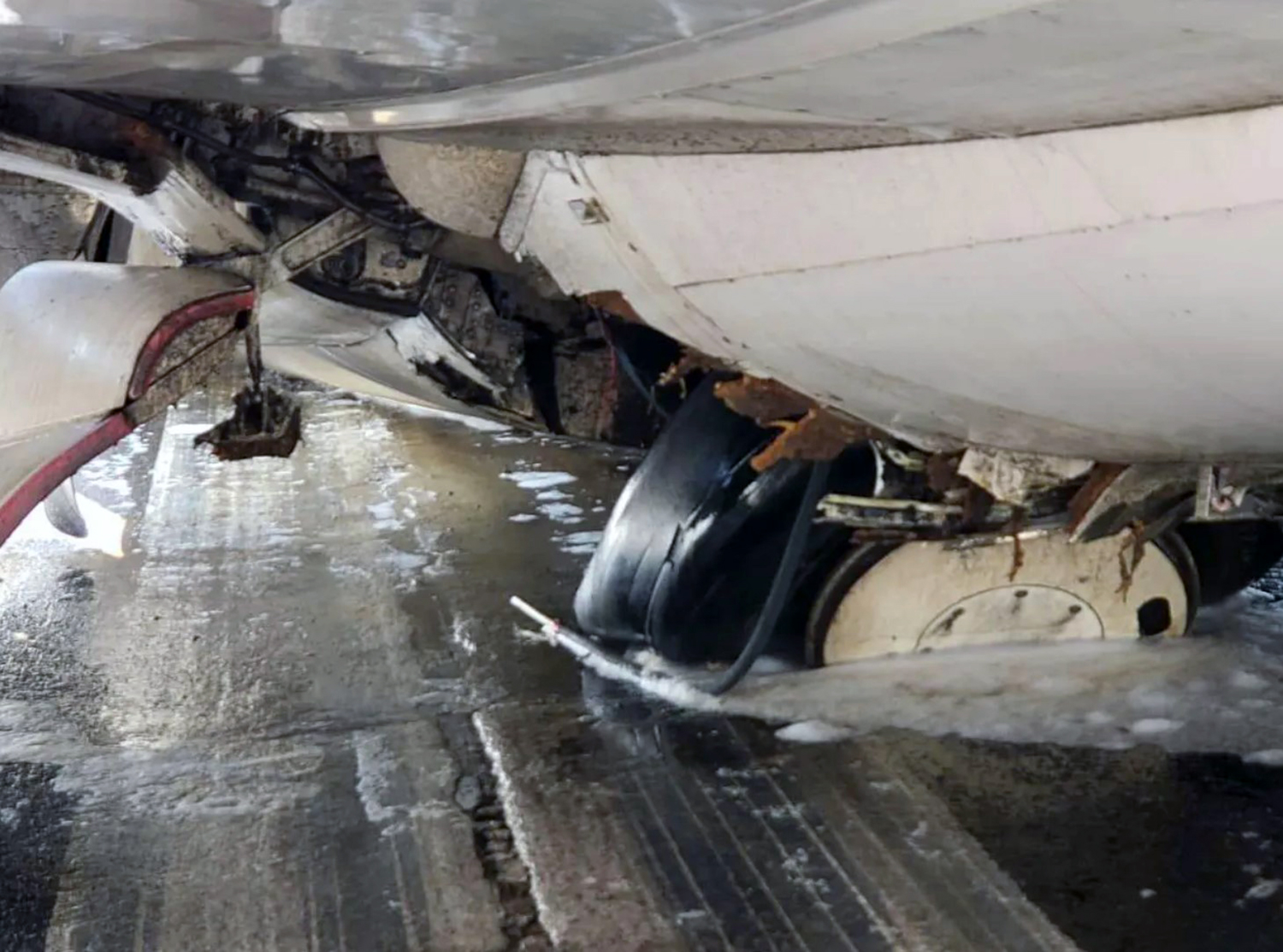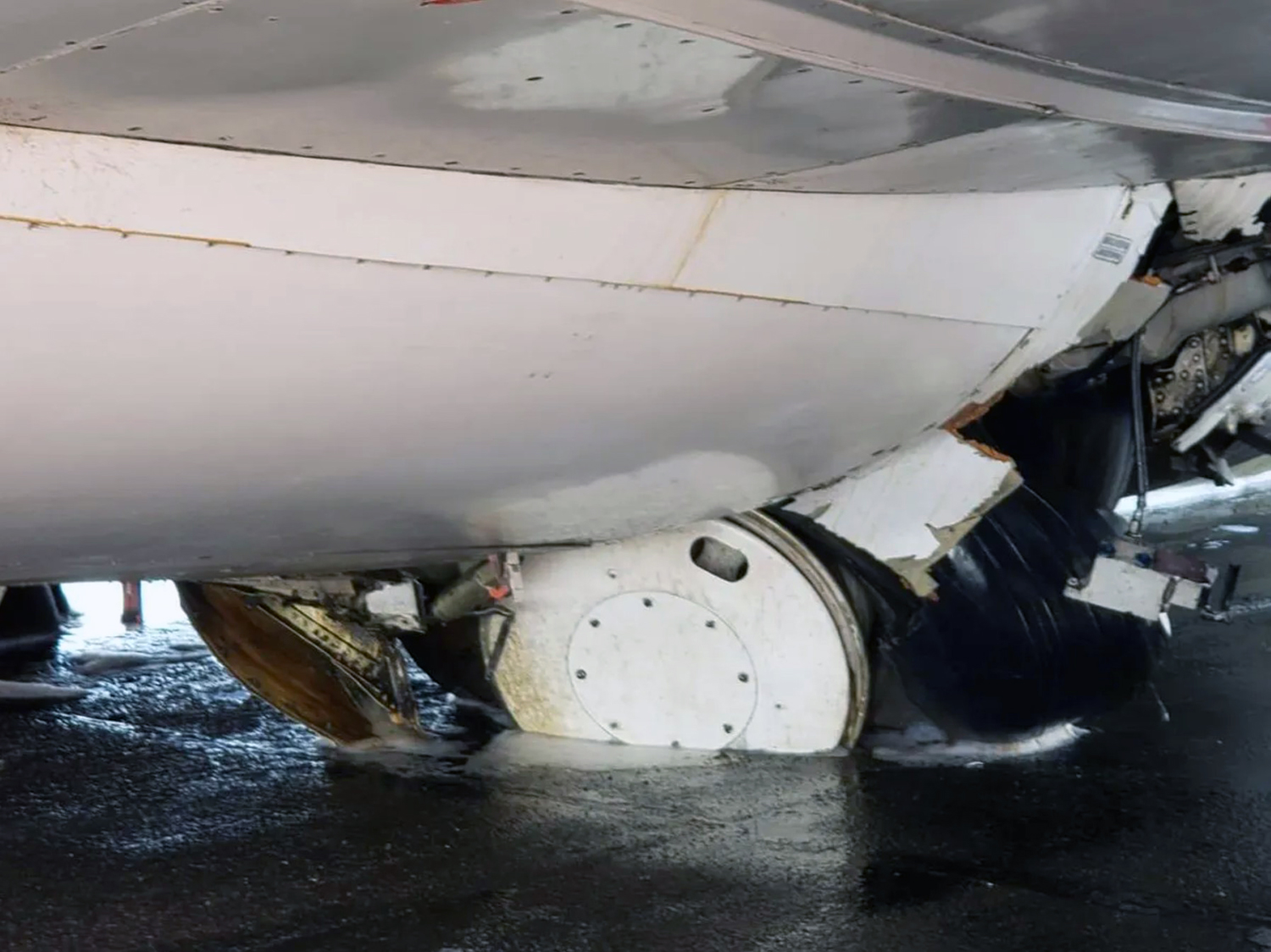Country
Crash of a Boeing 737-524 off Jakarta: 62 killed
Date & Time:
Jan 9, 2021 at 1440 LT
Registration:
PK-CLC
Survivors:
No
Schedule:
Jakarta - Pontianak
MSN:
27323/2616
YOM:
1994
Flight number:
SJY182
Crew on board:
6
Crew fatalities:
Pax on board:
56
Pax fatalities:
Other fatalities:
Total fatalities:
62
Captain / Total hours on type:
9023.00
Copilot / Total hours on type:
4957
Aircraft flight hours:
62983
Aircraft flight cycles:
40383
Circumstances:
On 9 January 2021, a Boeing 737-500 aircraft, registration PK-CLC, was being operated by PT. Sriwijaya Air on a scheduled passenger flight from Soekarno-Hatta International Airport (WIII), Jakarta to Supadio International Airport (WIOO), Pontianak . The flight number was SJY182. According to the flight plan filed, the fuel endurance was 3 hours 50 minutes. At 0736 UTC (1436 LT) in daylight conditions, Flight SJY182 departed from Runway 25R of Jakarta. There were two pilots, four flight attendants, and 56 passengers onboard the aircraft. At 14:36:46 LT, the SJY182 pilot contacted the Terminal East (TE) controller and was instructed “SJY182 identified on departure, via SID (Standard Instrument Departure) unrestricted climb level 290”. The instruction was read back by the pilot. At 14:36:51 LT, the Flight Data Recorder (FDR) data recorded that the Autopilot (AP) system engaged at altitude of 1,980 feet. At 14:38:42 LT, the FDR data recorded that as the aircraft climbed past 8,150 feet, the thrust lever of the left engine started reducing, while the thrust lever position of the right engine remained. The FDR data also recorded the left engine N1 was decreasing whereas the right engine N1 remained. At 14:38:51 LT, the SJY182 pilot requested to the TE controller for a heading change to 075° to avoid weather conditions and the TE controller approved the request. At 14:39:01 LT, the TE controller instructed SJY182 pilot to stop their climb at 11,000 feet to avoid conflict with another aircraft with the same destination that was departing from Runway 25L. The instruction was read back by the SJY182 pilot. At 14:39:47 LT, the FDR data recorded the aircraft’s altitude was about 10,600 feet with a heading of 046° and continuously decreasing (i.e., the aircraft was turning to the left). The thrust lever of the left engine continued decreasing. The thrust lever of the right engine remained. At 14:39:54 LT, the TE controller instructed SJY182 to climb to an altitude of 13,000 feet, and the instruction was read back by an SJY182 pilot at 14:39:59 LT. This was the last known recorded radio transmission by the flight. At 14:40:05 LT, the FDR data recorded the aircraft altitude was about 10,900 feet, which was the highest altitude recorded in the FDR before the aircraft started its descent. The AP system then disengaged at that point with a heading of 016°, the pitch angle was about 4.5° nose up, and the aircraft rolled to the left to more than 45°. The thrust lever position of the left engine continued decreasing while the right engine thrust lever remained. At 14:40:10 LT, the FDR data recorded the autothrottle (A/T) system disengaged and the pitch angle was more than 10° nose down. About 20 seconds later the FDR stopped recording. The last aircraft coordinate recorded was 5°57'56.21" S 106°34'24.86" E. At 14:40:37 LT, the TE controller called SJY182 to request for the aircraft heading but did not receive any response from the pilot. At 14:40:48 LT, the radar target of the aircraft disappeared from the TE controller radar screen. At 14:40:46 LT, the TE controller again called SJY182 but did not receive any response from the pilot. The TE controller then put a measurement vector on the last known position of SJY182 and advised the supervisor of the disappearance of SJY182. The supervisor then reported the occurrence to the operation manager. The TE controller repeatedly called SJY182 several times and also asked other aircraft that flew near the last known location of SJY182 to call the SJY182. The TE controller then activated the emergency frequency of 121.5 MHz and called SJY182 on that frequency. All efforts were unsuccessful to get any responses from the SJY182 pilot. About 1455 LT, the operation manager reported the occurrence to the Indonesian Search and Rescue Agency (Badan Nasional Pencarian dan Pertolongan/BNPP). At 1542 LT, the Air Traffic Services (ATS) provider declared the uncertainty phase (INCERFA) of the SJY182. The distress phase of SJY182 (DETRESFA) was subsequently declared at 1643 LT.
Probable cause:
The following contributing factors were identified:
• The corrective maintenance processes of the A/T problem were unable to identify the friction or binding within the mechanical system of the thrust lever and resulted in the prolonged and unresolved of the A/T problem.
• The right thrust lever did not reduce when required by the A/P to obtain selected rate of climb and aircraft speed due to the friction or binding within the mechanical system, as a result, the left thrust lever compensated by moving further backward which resulted in thrust asymmetry.
• The delayed CTSM activation to disengage the A/T system during the thrust asymmetry event due to the undervalued spoiler angle position input resulted in greater power asymmetry.
• The automation complacency and confirmation bias might have led to a decrease in active monitoring which resulted in the thrust lever asymmetry and deviation of the flight path were not being monitored.
• The aircraft rolled to the left instead of to the right as intended while the control wheel deflected to the right and inadequate monitoring of the EADI might have created assumption that the aircraft was rolling excessively to the right which resulted in an action that was contrary in restoring the aircraft to safe flight parameters.
• The absence of the guidance of the national standard for the UPRT, may have contributed to the training program not being adequately implemented to ensure that pilots have enough knowledge to prevent and recover of an upset condition effectively and timely.
• The corrective maintenance processes of the A/T problem were unable to identify the friction or binding within the mechanical system of the thrust lever and resulted in the prolonged and unresolved of the A/T problem.
• The right thrust lever did not reduce when required by the A/P to obtain selected rate of climb and aircraft speed due to the friction or binding within the mechanical system, as a result, the left thrust lever compensated by moving further backward which resulted in thrust asymmetry.
• The delayed CTSM activation to disengage the A/T system during the thrust asymmetry event due to the undervalued spoiler angle position input resulted in greater power asymmetry.
• The automation complacency and confirmation bias might have led to a decrease in active monitoring which resulted in the thrust lever asymmetry and deviation of the flight path were not being monitored.
• The aircraft rolled to the left instead of to the right as intended while the control wheel deflected to the right and inadequate monitoring of the EADI might have created assumption that the aircraft was rolling excessively to the right which resulted in an action that was contrary in restoring the aircraft to safe flight parameters.
• The absence of the guidance of the national standard for the UPRT, may have contributed to the training program not being adequately implemented to ensure that pilots have enough knowledge to prevent and recover of an upset condition effectively and timely.
Final Report:
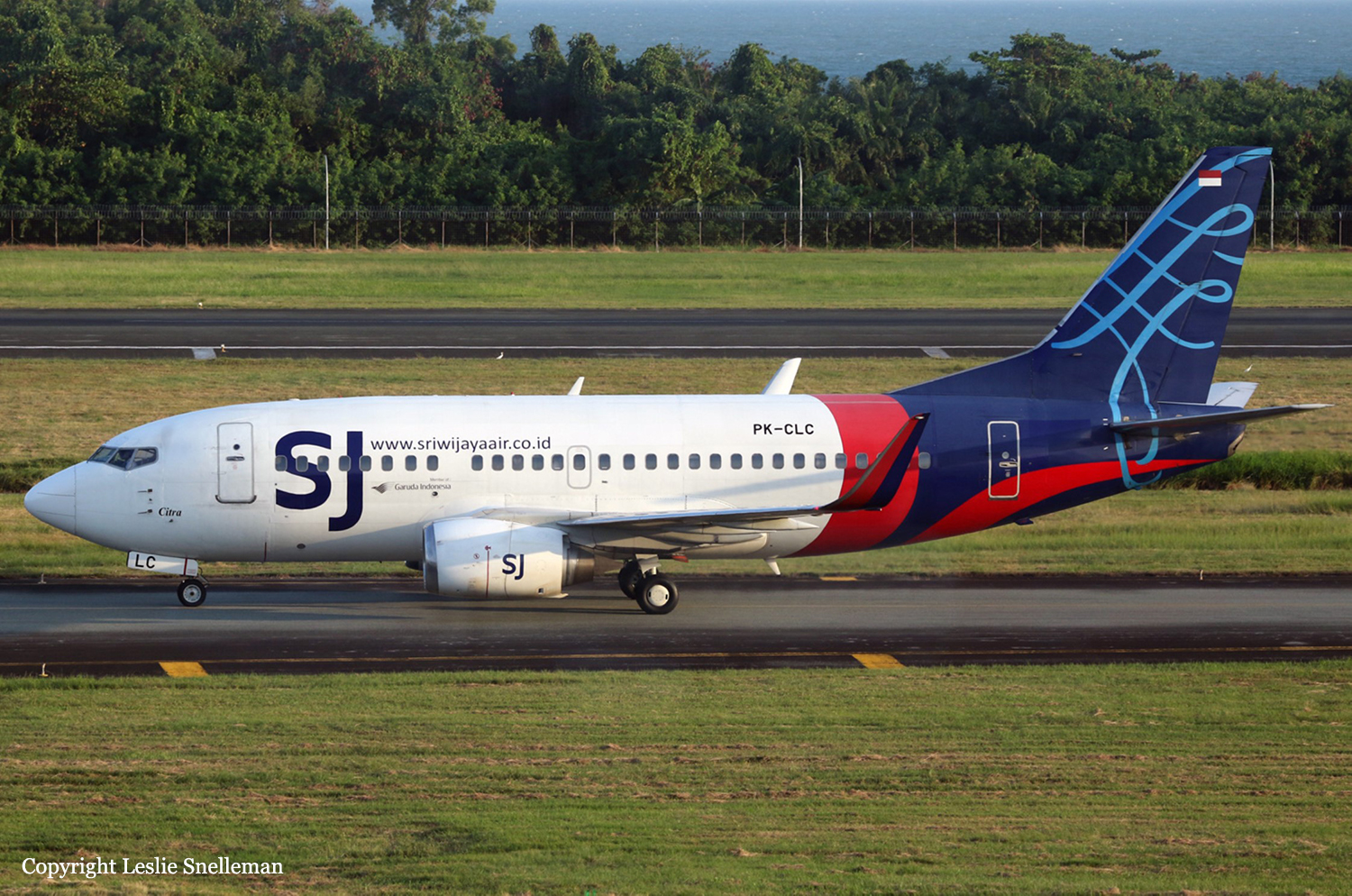
Crash of a Boeing 737-529 in Garowe
Date & Time:
Dec 2, 2020 at 0925 LT
Registration:
EY-560
Survivors:
Yes
Schedule:
Djibouti – Hargeisa – Garowe – Mogadishu
MSN:
26538/2298
YOM:
1992
Flight number:
IV206
Crew on board:
8
Crew fatalities:
Pax on board:
31
Pax fatalities:
Other fatalities:
Total fatalities:
0
Captain / Total hours on type:
5170.00
Circumstances:
The airplane departed Djibouti on a regular schedule service to Mogadishu with intermediate stops in Hargeisa and Garowe. There were 31 passengers and 8 crew members on board. On short final approach to Garowe Airport Runway 06, the airplane lost height and impacted the ground just prior to the runway threshold (concrete), causing the right main gear to collapse. The airplane slid on the runway until it turned to the right and came to rest on the runway with the right engine cowling contacting the runway surface. All 39 occupants evacuated safely and the aircraft was damaged beyond repair.
Probable cause:
The factor contributing to the accident is weather condition. Windshear is considered as the major cause of the accident. The root cause of the accident is a loss of control of the aircraft caused by windshear.
Final Report:
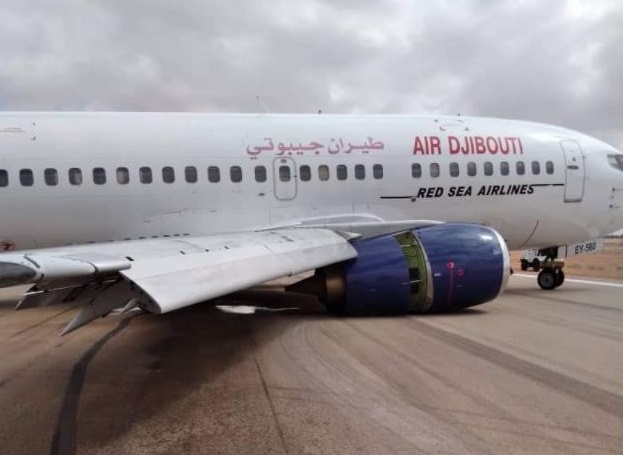
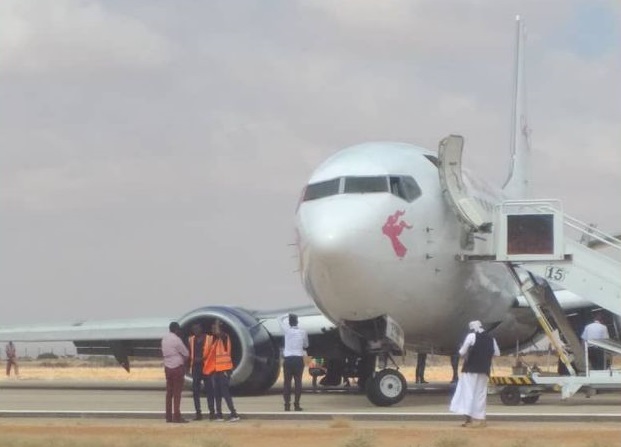
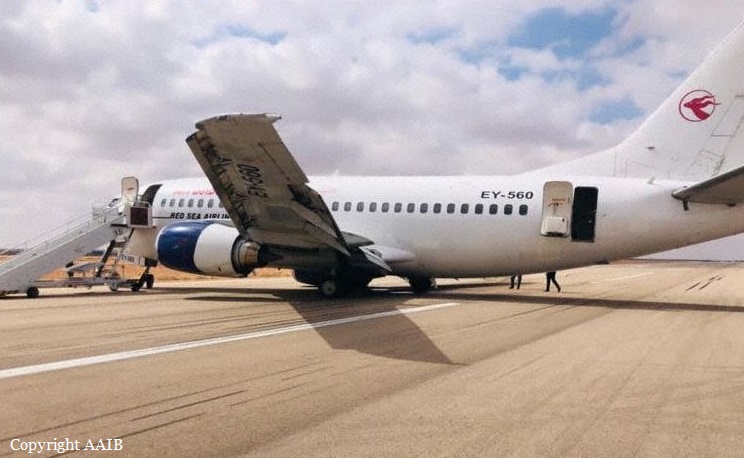
Crash of a Boeing 737-524 in Usinsk
Date & Time:
Feb 9, 2020 at 1227 LT
Registration:
VQ-BPS
Survivors:
Yes
Schedule:
Moscow - Usinsk
MSN:
28909/2960
YOM:
1997
Flight number:
UT595
Crew on board:
6
Crew fatalities:
Pax on board:
94
Pax fatalities:
Other fatalities:
Total fatalities:
0
Captain / Total hours on type:
7672.00
Copilot / Total hours on type:
4989
Aircraft flight hours:
57410
Aircraft flight cycles:
29162
Circumstances:
Following an uneventful flight from Moscow-Vnukovo Airport, the crew initiated the descent to Usinsk Airport Runway 13. On short final, the aircraft hit a snow bank (1,1 metre high) located 32 metres short of runway threshold, still on the concrete zone. Upon impact, both main gears were torn off and the airplane belly landed and slid for few hundred metres before coming to rest. All 100 occupants evacuated safely and the aircraft was damaged beyond repair.
Probable cause:
The accident with the Boeing 737-500 VQ-BPS aircraft occurred during the landing as a result of a collision of the aircraft with a snow parapet 1.1 m high at a distance of 32 m to the runway threshold (within the paved section of the runway), which resulted in damage to the main landing gear and their subsequent "folding" in the process of moving along the runway.
The accident was caused by a combination of the following factors:
- the presence of contradictions in the Federal Aviation Rules for flights in the airspace of the Russian Federation, the airline's radio control system and the aircraft operational documentation regarding the need and procedure for introducing temperature corrections to the readings of barometric altimeters at low ambient temperatures;
- Failure by the operator of the Usinsk aerodrome to comply with the FAP-262 requirements for the maintenance of the aerodrome, which resulted in the presence of snow parapets on the paved section of the landing strip;
- the operator of the Usinsk aerodrome did not eliminate the shortcomings in the winter maintenance of the aerodrome, noted based on the results of the inspection by the Rosaviatsia commission on January 22, 2020;
- lack of risk assessment in the airline associated with the execution of approaches in the baro-VNAV mode in the presence of factors that impede such approaches (low ambient temperatures, snow-covered underlying surface, drifting snow (snowstorm), significant changes in the relief in front of the runway end, lack of PAPI-type lights), as well as appropriate recommendations to the crews on the specifics of such approaches, including after the transition to visual flight, and crew training;
- insufficient assessment by the crew during the preparation of the existing threats (hazard factors) and making an insufficiently substantiated decision to perform an RNAV (GNSS) approach (under the control of the autopilot in LNAV/VNAV mode) without introducing a correction for low outside air temperature in altitude overflying waypoints, which led to a flight below the established glide path;
- performing a flight along the "extended glide path" after turning off the autopilot and switching to manual piloting without attempting to enter the set glide path;
- the PIC may have had a visual illusion of a "high glide path" due to a snow-covered underlying surface, a snowstorm and the presence of a ravine directly in front of the runway end in the absence of PAPI type lights, which led to an incorrect assessment of the aircraft's flight altitude after switching to manual piloting, lack of reaction to timely and correct warnings of the co-pilot and exit to the runway end at a height significantly less than the established one.
The accident was caused by a combination of the following factors:
- the presence of contradictions in the Federal Aviation Rules for flights in the airspace of the Russian Federation, the airline's radio control system and the aircraft operational documentation regarding the need and procedure for introducing temperature corrections to the readings of barometric altimeters at low ambient temperatures;
- Failure by the operator of the Usinsk aerodrome to comply with the FAP-262 requirements for the maintenance of the aerodrome, which resulted in the presence of snow parapets on the paved section of the landing strip;
- the operator of the Usinsk aerodrome did not eliminate the shortcomings in the winter maintenance of the aerodrome, noted based on the results of the inspection by the Rosaviatsia commission on January 22, 2020;
- lack of risk assessment in the airline associated with the execution of approaches in the baro-VNAV mode in the presence of factors that impede such approaches (low ambient temperatures, snow-covered underlying surface, drifting snow (snowstorm), significant changes in the relief in front of the runway end, lack of PAPI-type lights), as well as appropriate recommendations to the crews on the specifics of such approaches, including after the transition to visual flight, and crew training;
- insufficient assessment by the crew during the preparation of the existing threats (hazard factors) and making an insufficiently substantiated decision to perform an RNAV (GNSS) approach (under the control of the autopilot in LNAV/VNAV mode) without introducing a correction for low outside air temperature in altitude overflying waypoints, which led to a flight below the established glide path;
- performing a flight along the "extended glide path" after turning off the autopilot and switching to manual piloting without attempting to enter the set glide path;
- the PIC may have had a visual illusion of a "high glide path" due to a snow-covered underlying surface, a snowstorm and the presence of a ravine directly in front of the runway end in the absence of PAPI type lights, which led to an incorrect assessment of the aircraft's flight altitude after switching to manual piloting, lack of reaction to timely and correct warnings of the co-pilot and exit to the runway end at a height significantly less than the established one.
Final Report:
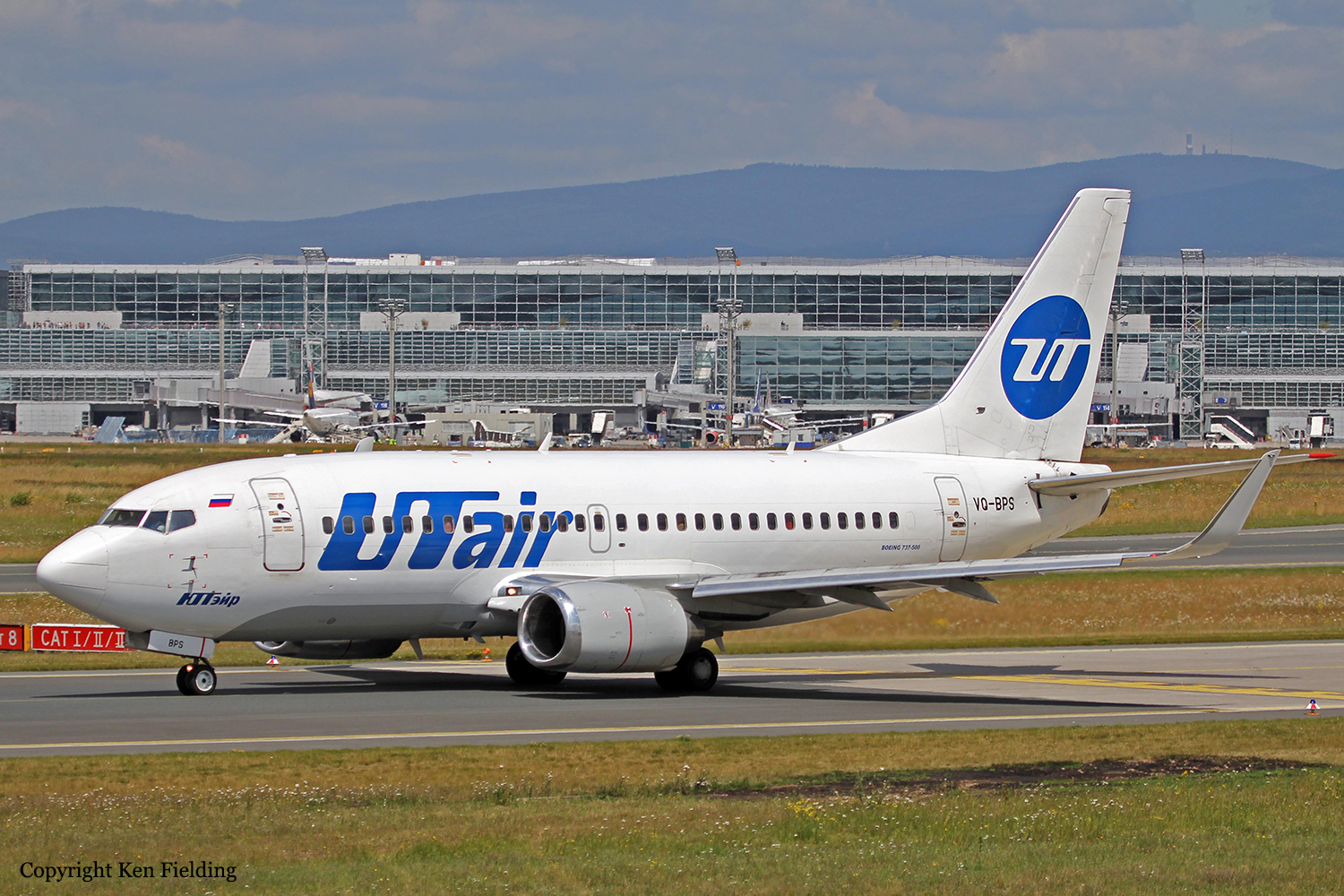
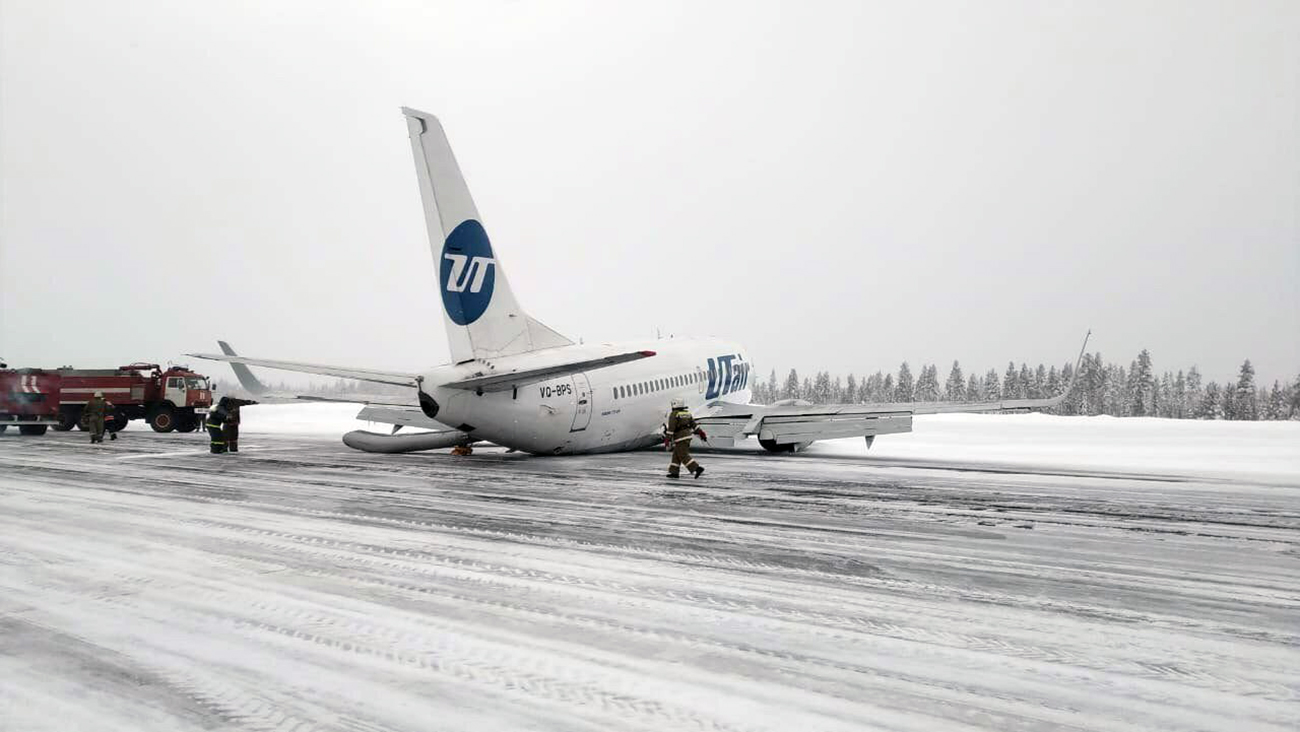
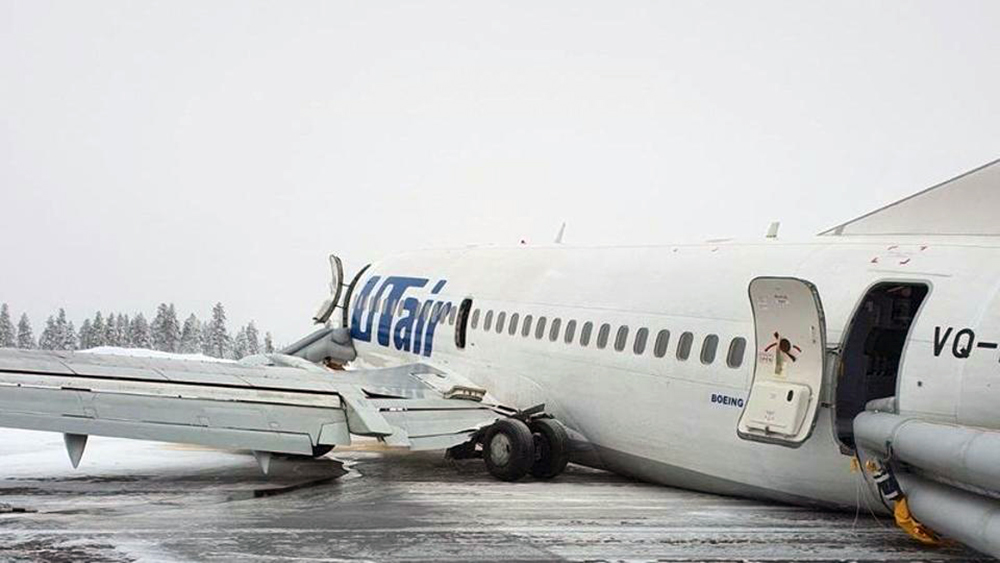
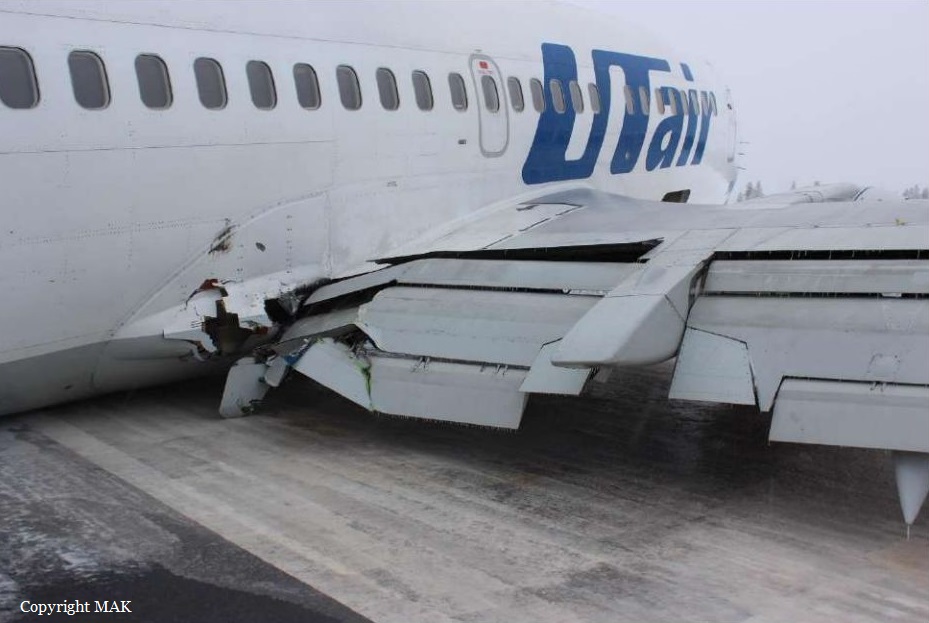
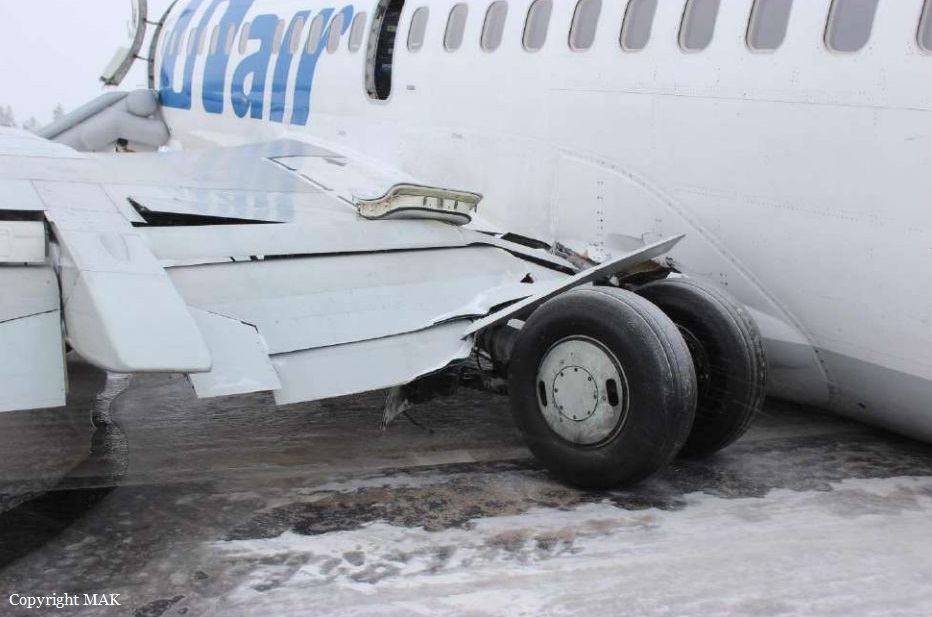
Crash of a Boeing 737-53C in La Paz
Date & Time:
Nov 22, 2018 at 1013 LT
Registration:
OB-2041-P
Survivors:
Yes
Schedule:
Lima – Cuzco – La Paz
MSN:
24825/1894
YOM:
1990
Flight number:
P9331
Crew on board:
5
Crew fatalities:
Pax on board:
122
Pax fatalities:
Other fatalities:
Total fatalities:
0
Circumstances:
The airplane departed Lima on a schedule service to La Paz with an intermediate stop in Cuzco, carrying 122 passengers and a crew of five. Following an uneventful flight from Cuzco-Alejandro Velasco Astete Airport, the crew completed the approach to La Paz-El Alto Airport. After touchdown, the crew started the braking procedure when both main landing gear collapsed. The airplane slid on its belly for few dozen metres before coming to rest on runway 10. All 127 occupants evacuated safely and no one was injured. It was reported that the touchdown was considered as normal. The airplane was damaged beyond repair.
